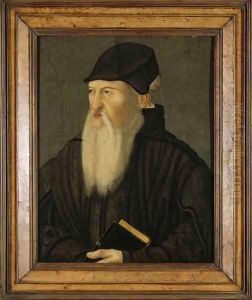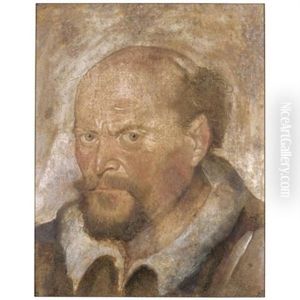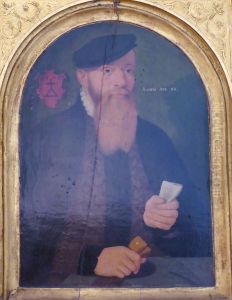Hans Asper Paintings
Hans Asper was a notable Swiss Renaissance painter, born in Zurich in the year 1499. He is best known for his portraits and still life paintings, which exhibit a remarkable level of detail and a keen observation of nature. Asper's works provide an invaluable glimpse into the styles and fashions of the Swiss bourgeoisie during the 16th century.
Asper began his career as an artist at a time when Zurich was becoming a significant center of the Reformation, and this socio-political context influenced his work to some extent. Initially, he was active as a graphic artist and later developed a specialization in portrait painting. Over the years, he became the leading portrait painter in Zurich. His portraits are characterized by their vividness and the lifelike representation of his subjects.
In addition to portraits, Asper was known to have an interest in botany, which was reflected in his detailed and realistic depictions of flowers and plants. These botanical illustrations not only showcase his skill as a painter but also contribute to the scientific knowledge of the period. His interest in the natural world extended beyond plants, as he also painted animals with great accuracy.
Throughout his career, Asper enjoyed the patronage of the affluent classes in Zurich, which allowed him to work on a wide range of commissions. His portraits often included the sitters in contemporary dress, surrounded by objects that reflected their social status, profession, or personal interests. This practice has provided historians with insights into the cultural and material world of the Swiss elite during the Renaissance.
Hans Asper's death occurred in 1571, in his hometown of Zurich. His legacy lives on through his contributions to Swiss art and the detailed records of the Renaissance period that his paintings provide. Although not as widely known as some of his contemporaries, Asper's works are still appreciated for their quality and historical significance, and they can be found in various museum collections and as part of historical studies of the period.







